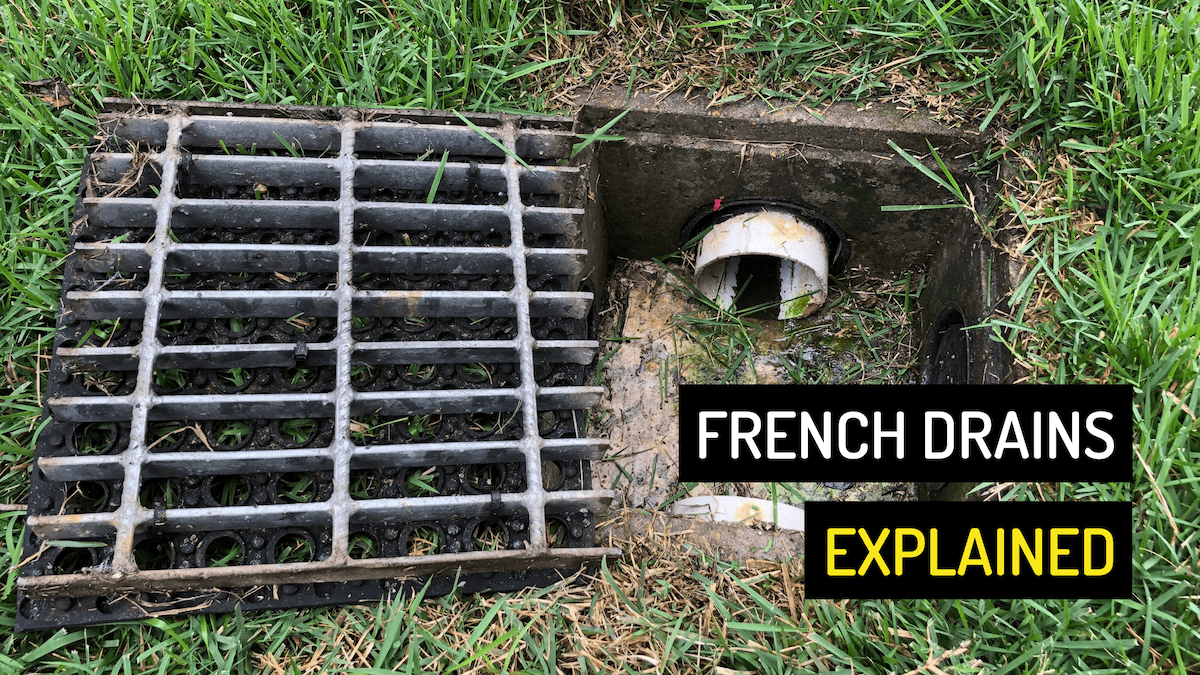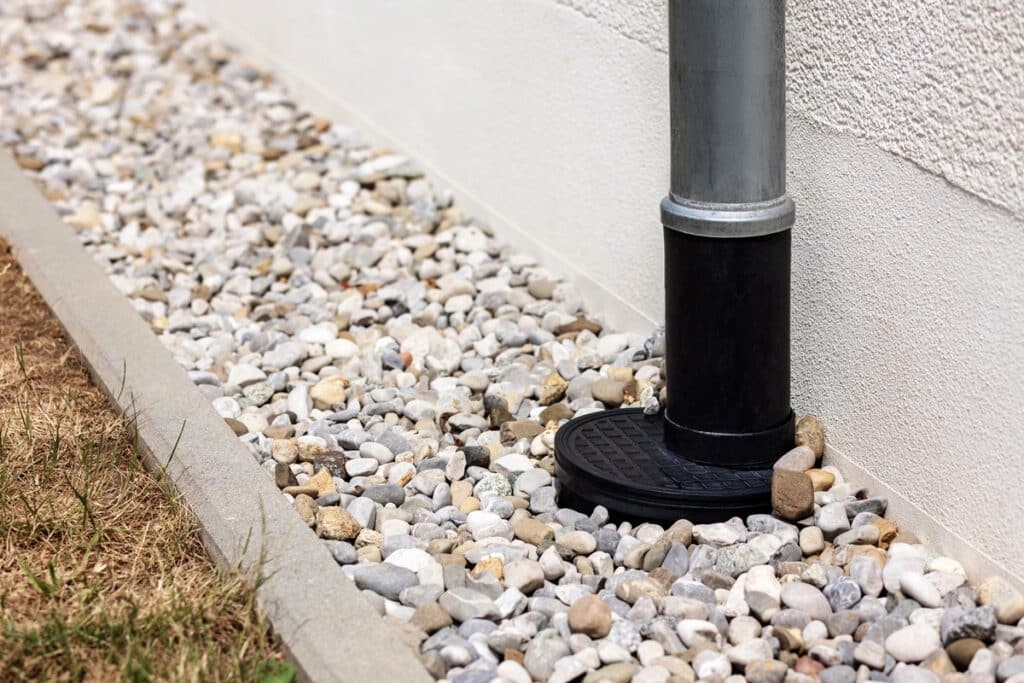The Important Guide to Keeping Your French Drain for Durable Efficiency
Maintaining your French drainpipe is key to its performance and your residential or commercial property's defense. Normal checks can conserve you from pricey fixings and water damage. You'll want to recognize what signs to try to find and how typically to check your system. Plus, comprehending the cleansing procedure can make a significant difference. Allow's check out the necessary steps for guaranteeing your drain functions well for several years to find.
Comprehending the Feature of a French Drainpipe
A French drain is an important component in managing water around your home. It directs excess water away from your structure, avoiding flooding and damages. When heavy rain falls, the drain accumulates water with a perforated pipeline buried in gravel. This system allows water to flow openly, lowering stress on your basement walls and minimizing the threat of leaks.You could ask yourself just how it operates in method. As water saturates the dirt, gravity pulls it toward the drainpipe. The perforated pipeline captures this water, transporting it to an assigned water drainage area or tornado sewage system. This process keeps your backyard dry and safeguards your home's architectural integrity.Understanding how a French drainpipe functions is vital to valuing its importance. By successfully transporting water away, it helps keep a dry and safe living environment. So, maintaining your French drain in leading condition warranties you prevent pricey repair work down the line.
Routine Inspections: What to Search for
When you're examining your French drainpipe, begin by looking for any type of obstructions that may be blocking water flow. Pay interest to indications of surface area disintegration around the drainpipe, as this can suggest prospective issues. Normal assessments will help maintain your drain system operating properly.
Clogged Drainpipe Evaluation
How can you tell if your French drainpipe is clogged? Watch for water merging in your yard, specifically after hefty rain. That's a red flag if you notice areas where water collects rather of draining. You should additionally examine the drainpipe outlet; if water isn't spurting as it should, there's most likely a blockage. Listen for uncommon gurgling sounds, which can show trapped air. Furthermore, inspect the drain's surface area for any kind of plant life development, as origins can penetrate and block the system. If you scent musty odors, it could point to stationary water triggered by a clog. Regularly evaluating these indicators can assist you maintain your French drainpipe effectively and avoid costly fixings.
Surface Area Erosion Examine

Cleaning Your French Drain: Step-by-Step Overview
Cleaning your French drain is essential for maintaining it operating correctly. You'll require some particular devices and a clear procedure to guarantee every little thing runs smoothly. Let's stroll through the actions and pointers for preserving your drainpipe effectively.
Devices You'll Require
To tackle the task of cleaning your French drainpipe properly, you'll wish to collect a few important devices. Get a durable pair of gloves to secure your hands from particles and sharp items. A little shovel or trowel will certainly assist you get rid of dust or clogs around the drainpipe. For getting rid of out the inside, a plumbing's snake or a high-pressure water nozzle can be incredibly helpful. You'll also need a bucket for collecting any particles you draw out. Having a yard hose pipe on hand will make it easier to wash out the drain and guarantee it's streaming smoothly. With these devices ready, you'll be set for an extensive cleaning session!
Cleansing Refine Steps
Begin by examining the area around your French drain for any noticeable particles or clogs. Get rid of fallen leaves, branches, or dirt that may block water flow. Next, examine the inlet and outlet areas; clear any kind of obstructions to guarantee correct drain. Use a yard hose pipe to flush the drainpipe, directing water right into the inlet. This assists dislodge any kind of built up sludge or debris. If you observe consistent blockages, take into consideration utilizing a plumbing technician's snake to damage them up. After cleansing, inspect the gravel around the drainpipe; replenish it if it's cleaned away. Finally, confirm the drain covers are intact and firmly in place to protect against debris from getting in. Regular cleaning maintains your French drainpipe working properly.
Maintenance Frequency Tips
While normal maintenance is vital for your French drainpipe's longevity, understanding just how often to preserve it can make all the distinction. Preferably, you should examine your French drainpipe at the very least twice a year, preferably in springtime and loss. After hefty rainfall or snowmelt, check for obstructions or particles. If you notice any standing water, it's time to cleanse your drain.In locations with heavy foliage, more regular maintenance-- regarding every three months-- might be essential. In addition, consider cleaning your French drain try here after major storms or if you observe water merging in your lawn. By remaining aggressive, you'll assure your French drainpipe functions effectively and safeguards your building from water damages. Routine checks will certainly conserve you time and cash in the lengthy run.
Recognizing Typical Issues and Their Solutions
It's vital to determine usual problems with your French drainpipe and apply reliable options when you discover water pooling in your yard or damp places in your cellar. One regular issue is clogging, frequently triggered by particles like fallen leaves or debris. To repair this, you can utilize a plumbing snake or a high-pressure water jet to clear blockages.Another issue could be inappropriate incline. If your drainpipe isn't sloped appropriately, water won't stream far from your home. You can adjust the incline by excavating and repositioning the drainpipe pipe.Lastly, check for damage or fractures in the drainpipe itself. Replacing the damaged areas is crucial for peak performance if you locate any type of. By dealing with these issues immediately, you'll assist assure that your French drainpipe remains to work properly, securing your home from water damages and preserving a completely dry, risk-free setting.
Seasonal Upkeep Tips for Your French Drainpipe
Dealing with usual problems with your French drainpipe is just the very first step in ensuring its lasting effectiveness. Seasonal upkeep is vital for peak efficiency. In the spring, remove leaves and particles that may have collected throughout winter. Look for any kind of obstructions in the electrical outlet or catch basin, as water requires a clear course to stream freely.During summer, examine your drain for any type of indications of clearing up or moving soil. Ensure it's still level and functioning properly. As fall techniques, clear out any type of fallen leaves to prevent obstructions prior to winter months arrives.In winter, watch for freezing temperatures. If you reside in a chilly environment, make certain your drainpipe isn't at threat of freezing. Shielding revealed pipes can aid. Normal checks and timely maintenance can avoid expensive repair services and maintain your French drain working successfully year-round. Remain positive and appreciate satisfaction knowing your drainage system remains in great form!
When to Hire a Professional
Knowing when to hire a professional can save you time and prevent further damages to your French drainpipe. If you discover persistent standing water in your backyard, it's a clear indicator that your drainpipe may be blocked or harmed. Don't ignore weird odors, as they can show sewage back-up or decay, which requires prompt attention.If you locate that your drain isn't working correctly after attempts to tidy or preserve it, it's time to reach out for professional aid. Additionally, if you're not sure regarding the underlying issues or do not have the required devices, hiring an expert can give peace of mind.Finally, if your French drainpipe is old or has experienced significant deterioration, professional evaluation can identify whether repairs or total substitute is needed. Trust fund the specialists to assure your water drainage system functions read the full info here effectively for years to find.
Tips for Preventing Future Water Drainage Troubles
To maintain your French drainpipe operating efficiently, consistently examining and keeping it can make all the difference. Start by clearing particles, leaves, and dust from the surface and drain openings. This stops obstructions that can cause water backup. Inspect the crushed rock around the drainpipe; if it's compacted or deteriorated, take into consideration including fresh gravel to keep ideal flow.Next, divert water far from your drainpipe by making sure rain gutters and downspouts are clear and routing water a minimum of three feet away from your structure. Consistently check for any indicators of damages or drooping. If you notice issues, resolve them immediately.Finally, think about setting up a filter or a catch basin to trap larger debris before it goes into the drainpipe. By remaining positive with these ideas, you'll decrease the danger of future water drainage issues and maintain your French drainpipe in leading shape.
Frequently Asked Inquiries
How much time Does a French Drainpipe Commonly Last?
A French drainpipe normally lasts around 30 to 40 years, depending on the products utilized and upkeep (Portland French Drain). If you stay on top of normal checks, you can prolong its life-span also additionally
Can I Mount a French Drain Myself?
Yes, you can mount a French drain yourself if you have actually got the right tools and understanding. Simply ensure to intend very carefully, adhere to neighborhood laws, and assurance appropriate drain to prevent future problems.
What Products Are Utilized in a French Drainpipe?
You'll need perforated pipe, crushed rock, landscape fabric, and a strong water drainage pipeline for your French drain. These materials help reroute water successfully, protecting against flooding and keeping your home dry and safe from water damages.

Is an Authorization Required to Install a French Drain?
You'll likely require a permit to mount a French drain, relying on neighborhood policies. Talk to your municipality to guarantee you follow any essential standards and prevent prospective concerns during installation.
What Are the Expenses Associated With French Drainpipe Upkeep?
Preserving a French drain normally sets you back in between $100 and $500 each year. You'll require to consider expenditures for cleaning, fixings, and assessments. Routine upkeep assists avoid bigger warranties and expenditures your system operates appropriately for several years - Portland French Drain. When you're examining your French drain, beginning by checking for any type of clogs that could be blocking water circulation. By staying positive, you'll assure your French drain features successfully and protects your home from water damage. When you see water pooling in your backyard or damp places in your cellar, it's essential to identify usual concerns with your French drain and implement efficient options. You can adjust the slope by excavating and repositioning the drain pipe.Lastly, check for damage or cracks in the drainpipe itself. Check the crushed rock around the drain; if it's compacted or deteriorated, take into consideration including fresh crushed have a peek at this site rock to keep excellent flow.Next, divert water away from your drain by guaranteeing downspouts and gutters are clear and directing water at the very least 3 feet away from your foundation